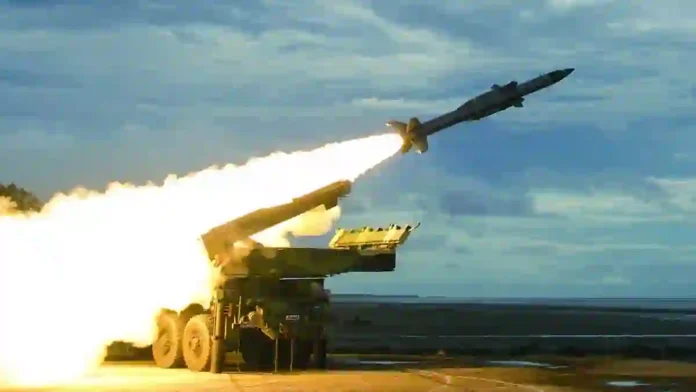Akash Prime represents a significant advancement in India’s air defence capabilities, particularly addressing the challenges of high-altitude environments like those found along the Line of Actual Control (LAC).
Developed by the Defence Research and Development Organisation (DRDO) in collaboration with private industry and public sector units, Akash Prime builds upon the proven Akash missile system with enhancements specifically tailored for difficult terrains above 4,500 metres.
Read- Anadrone Systems: Pioneering Indigenous Aerial Target Systems For Atmanirbhar Bharat
The July 2025 trials in Ladakh, conducted at an altitude of 15,000 feet, showcased the system’s ability to accurately neutralize high-speed unmanned aerial targets under conditions of thin air and low temperatures—an environment where many global missile systems experience notable performance degradation.
A core upgrade in Akash Prime is its indigenously developed Radio Frequency seeker, which gives the missile precise final-phase homing capabilities. This technology, paired with command guidance and fire-and-forget functionality, allows Akash Prime to independently track and destroy enemy aircraft, drones, and missiles at altitudes up to 18 km and at supersonic speeds (Mach 3–3.5).
The integrated seeker, upgraded control systems, and improved resilience in low-oxygen, cold environments make it a formidable shield for mountainous borders where aerial threats are evolving rapidly.
Strategically, Major General Rajan Kochar (Retd) has emphasised that Akash Prime’s deployment will significantly boost India’s layered and mobile air defence, making it highly responsive against a spectrum of aerial threats—from enemy aircraft to loitering munitions and drones often used near the LAC.
Read- India Successfully Test-Fires Nuke Capable Agni-1 Ballistic Missiles From Integrated Test Range
The missile has already demonstrated operational success during exercises and real encounters, like Operation Sindoor, where previous Akash variants thwarted drone attacks, including those launched with Chinese and Turkish-origin technologies against Indian positions.
The successful high-altitude trials and subsequent induction into the Army’s missile regiments underline a key milestone for the Atmanirbhar Bharat (self-reliant India) initiative. The indigenous development and validation of such systems mark not just technological prowess but also a strategic shift towards minimizing dependency on foreign air defence options, while keeping pace with evolving threats along India’s borders.
As Rajan Kochar and defence analysts point out, Akash Prime stands as a game-changer, ensuring India’s ability to maintain a robust and flexible air defence shield at its most critical and vulnerable frontiers.
Based On Republic TV Interview
Agencies




